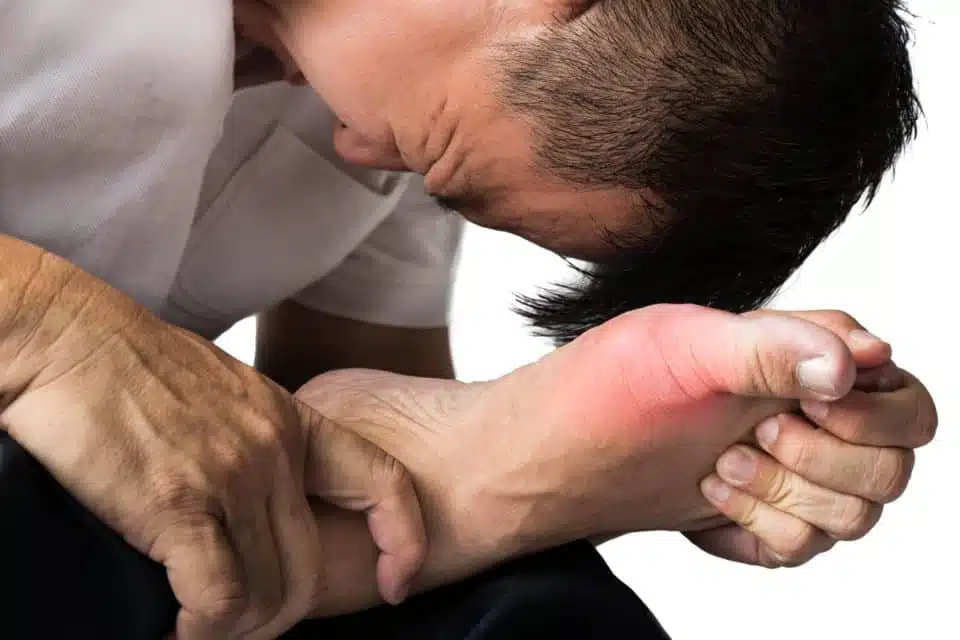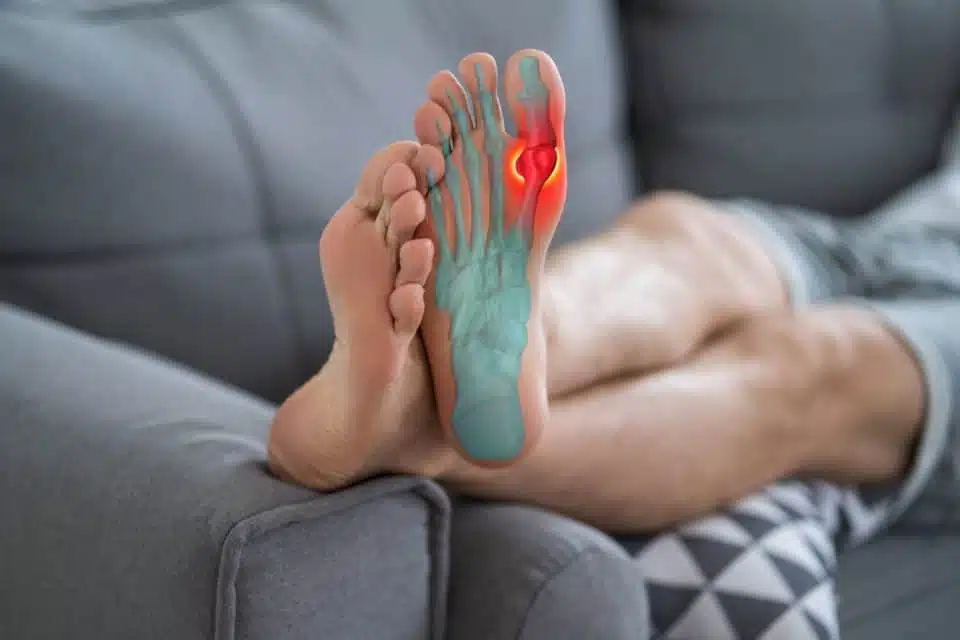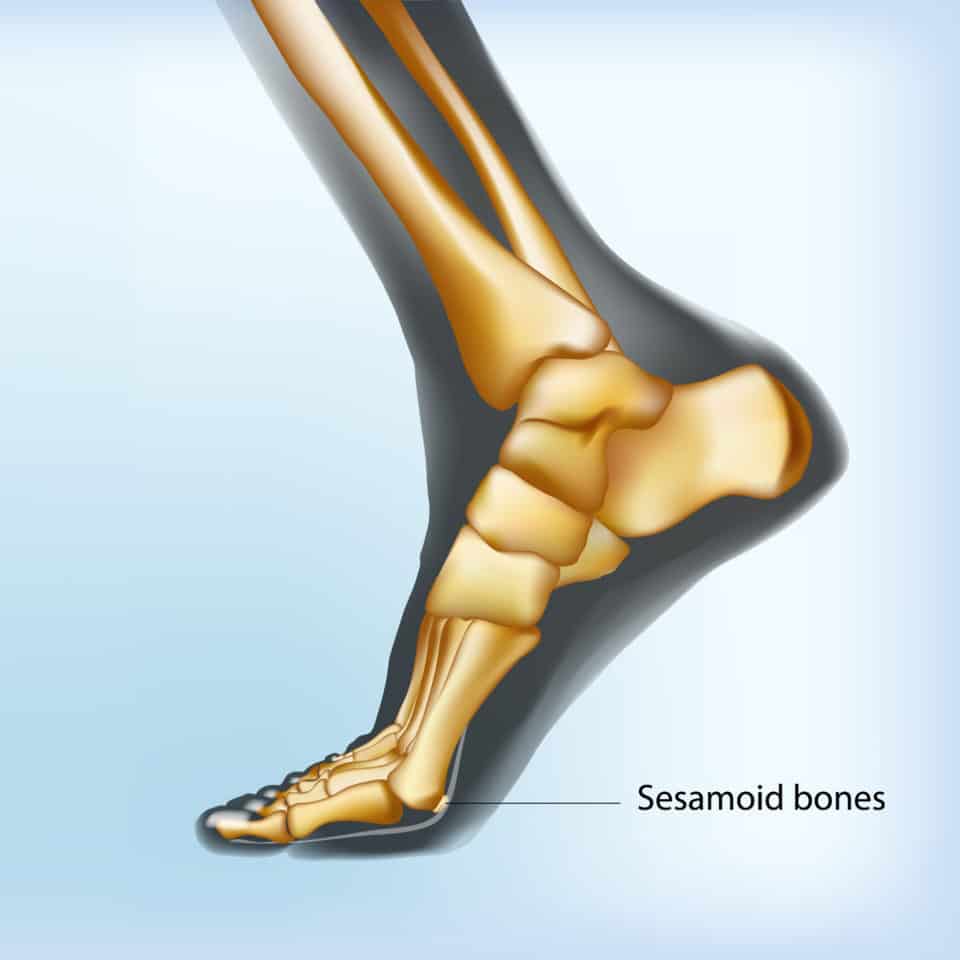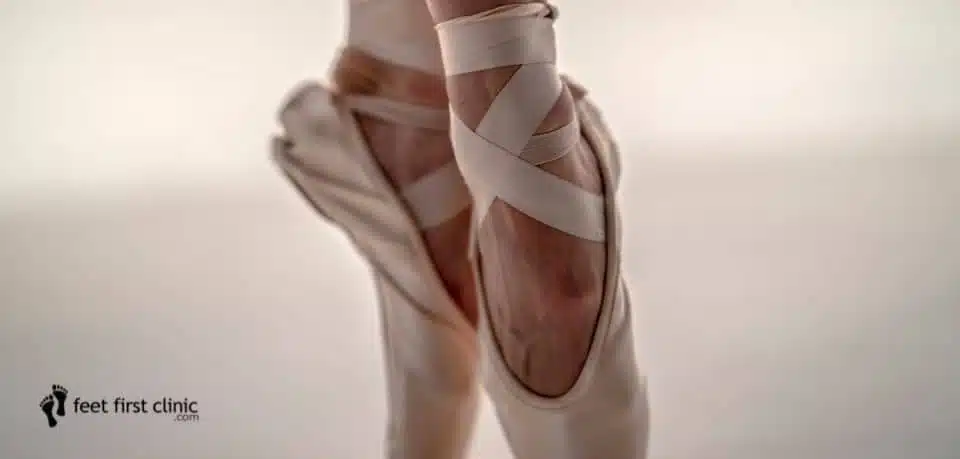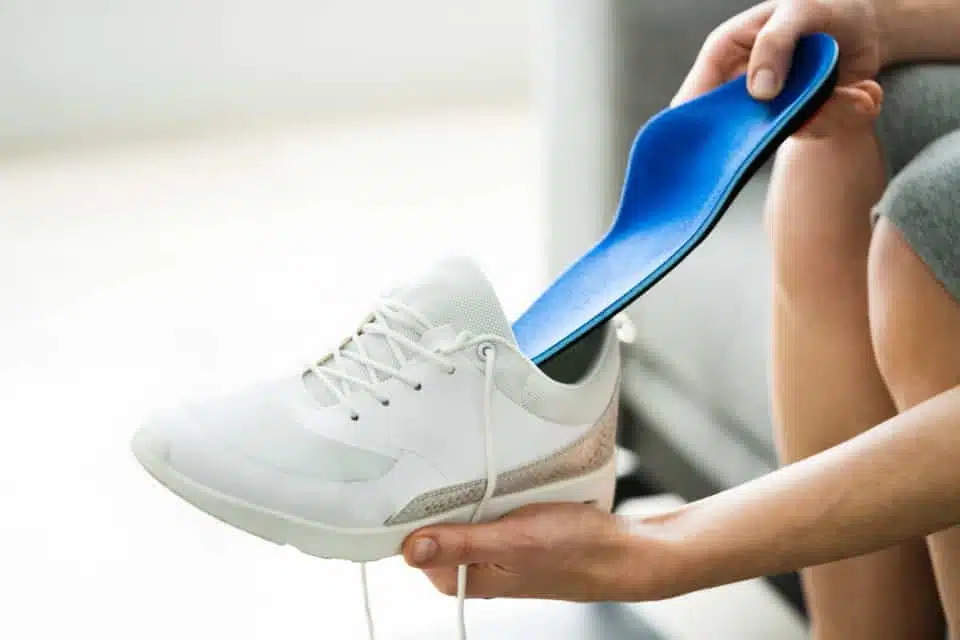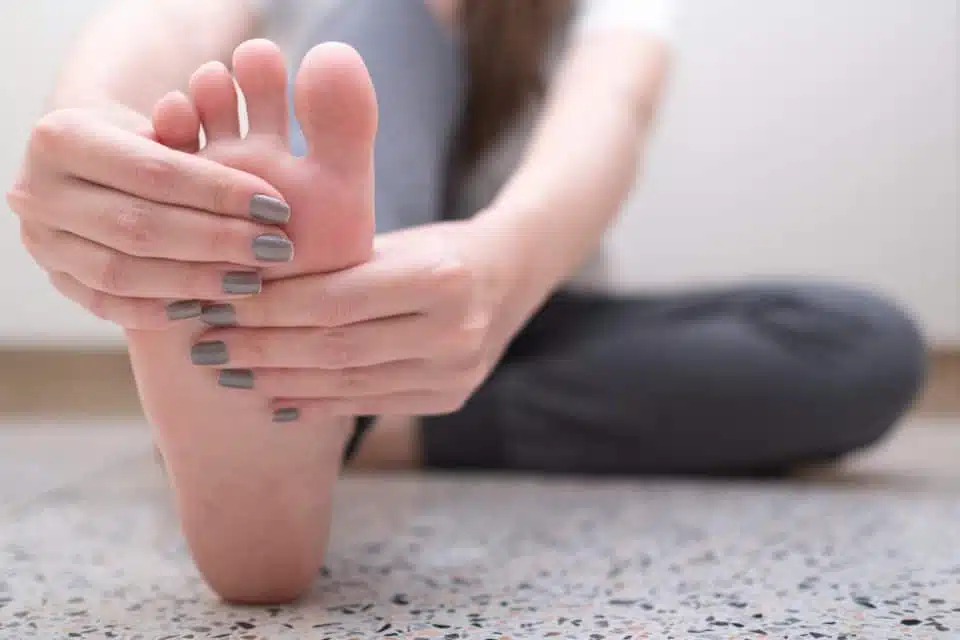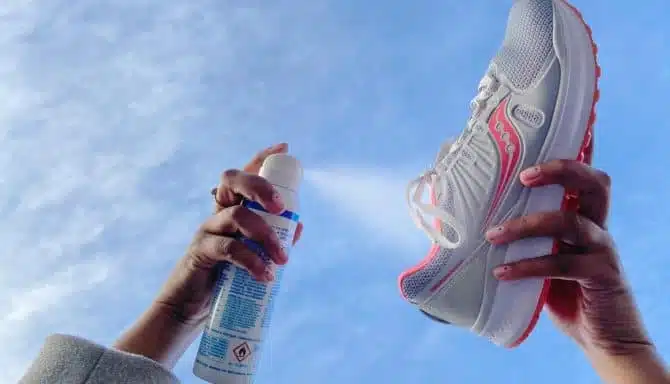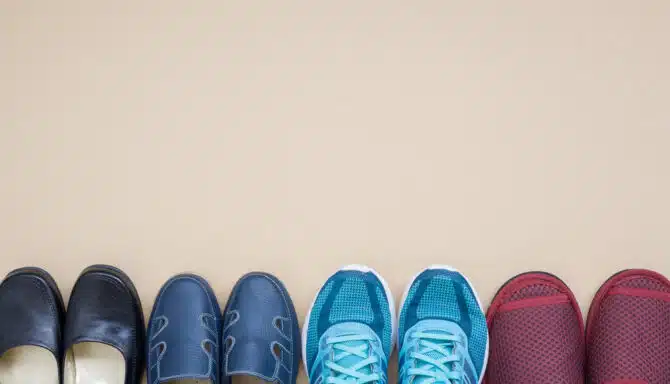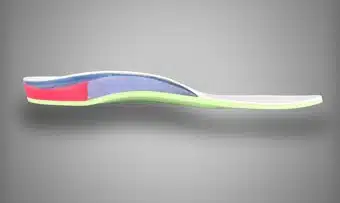There are countless causes of foot pain. One cause not often discussed is a foot condition called sesamoiditis, a type of inflammation of the sesamoid bones.
A sesamoid is a type of bone embedded in a tendon; they’re in numerous body parts, such as the hands. Sesamoiditis targets the sesamoid bones in the foot, which look like two small, circular bones located beneath the big toe joint.
Today, we will discuss what sesamoiditis is, who is at risk, and how you can receive treatment for this painful foot condition.
What is Sesamoiditis?
Sesamoiditis is a type of tendonitis (tendon inflammation). Specifically, it is classified as inflammation of the sesamoid bones and tendons in the ball of the foot.
Sesamoiditis is a unique condition in that the sesamoid bones are the only bones in our body that are connected just to tendons – not other bones. Because of this, the sesamoid bones in our feet bear the brunt of insufficient shock absorption, causing inflammation and pain.
Other types of tendonitis in the foot include Achilles tendonitis (inflammation of the Achilles tendon) and extensor tendonitis (inflammation of the extensor tendons on the top of the foot).
Symptoms of Sesamoiditis
- Big toe pain, specifically pain under the big toe
- Bruising
- Difficulty bending the big toe
- Pain on the bottom of the foot
- Mobility issues: the inflammation of the sesamoid bones can make it difficult for the feet to bear weight
- Redness and swelling on the bottom of the foot
Who is at Risk of Developing Sesamoiditis?
Sesamoiditis is an overuse injury, so physically active people are at risk. Since athletes, dancers and runners bear weight on the balls of their feet repeatedly, they often don’t get enough shock absorption and protection from the ground’s surface. This repeated stress is one of most common cause of sesamoiditis in young adults.
When it comes to older adults, those with osteoarthritis and bone spurs are prone to developing sesamoiditis. The sesamoid bones are already weak when you have these conditions, so they’re more susceptible to inflammation.
Additional risk factors include:
- High arches
- Wearing high heels
- Having large sesamoid bones
- Osteoporosis
Sesamoiditis Treatment and Prevention
Wearing custom orthotics can help unload the stress on the sesamoid bones by correcting any biomechanical abnormalities that are causing excessive strain on the sesamoid bones. Likewise, they’re a great way to relieve pain and also prevent the development of sesamoiditis. They provide both cushioning and the ability to correct the problem over time. These are a great option for severe pain since they fully conform to the unique shape of your foot. Superfeet insoles can also be a good option for cushioning, shock absorption and arch support if your case is mild.
Proper footwear with good support and cushioning is also essential for relieving (and even preventing) pain associated with sesamoiditis.
Your family doctor or foot specialist may also suggest non-steroidal anti-inflammatory drugs (NSAIDs), like ibuprofen, to help with the pain. A specialist, like a chiropodist, may be able to tape your big toe, so it slightly points downward, providing relief.
Sesamoiditis Treatment at Home
- Rest and relaxation
- Ice and elevation
- Avoiding physical activity
- Investing in well-fitted shoes with supportive and comfortable features. Specifically, soft soles and low heels are helpful, like the ASICS Gel Nimbus.
